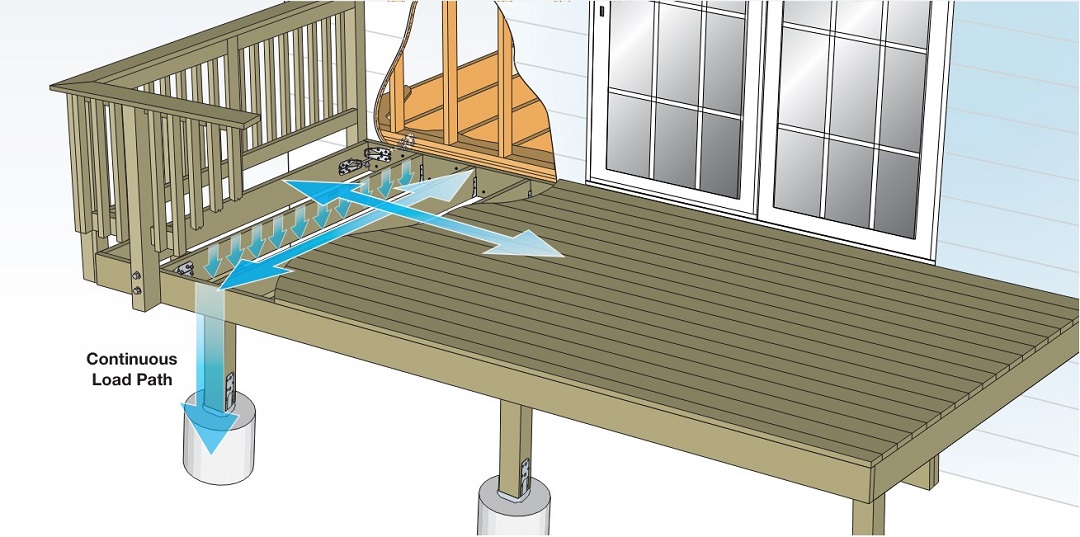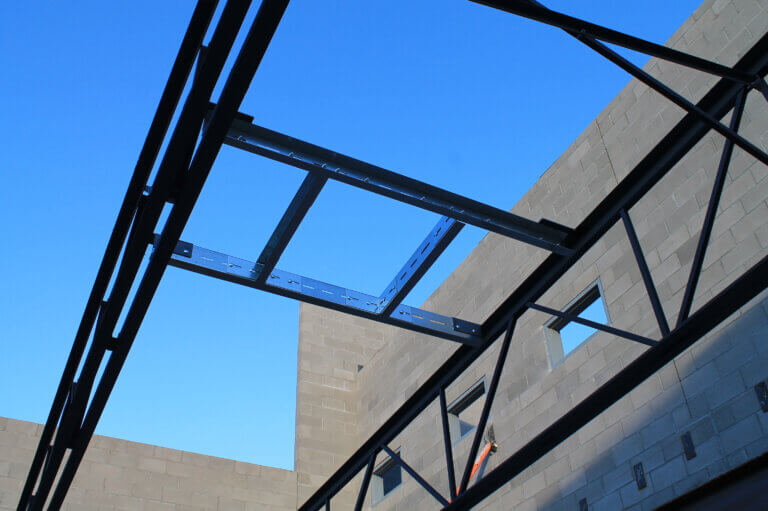Creating a Continuous Load Path
The continuous load path is an engineering concept that, when constructed, assures loads are completely transferred from the point of application to the foundation via the structural components and connections. Continuous load paths are typically constructed to resist forces from gravity (downward), lateral (horizontal), and uplift loads.
For example, a vertical load path effectively transfers the weight (load) of the deck and everything on it through its frame to the foundation or the adjacent support structure (typically your home) and finally to the ground. If your deck is built with a continuous load path, it is better equipped to resist load forces generated by occupancy, wind, snow, or earthquakes.

Connecting Your Deck Securely
There are several key connection points that are essential to building a safe, code-compliant deck. Decks built with a continuous load path rely on a system of crucial connections to transfer load through the deck frame and into the ground or supporting structure. This video teaches the basics of properly creating a continuous load path.
For maximum corrosion resistance, use connectors, screws and nails made from stainless steel. Also, depending on where you live, there are many different code requirements that need to be considered in the construction of a deck; always be sure to consult with your local building department before building or repairing your deck.
Visit our Deck Center to learn more about achieving a continuous load path in the construction of your deck.


